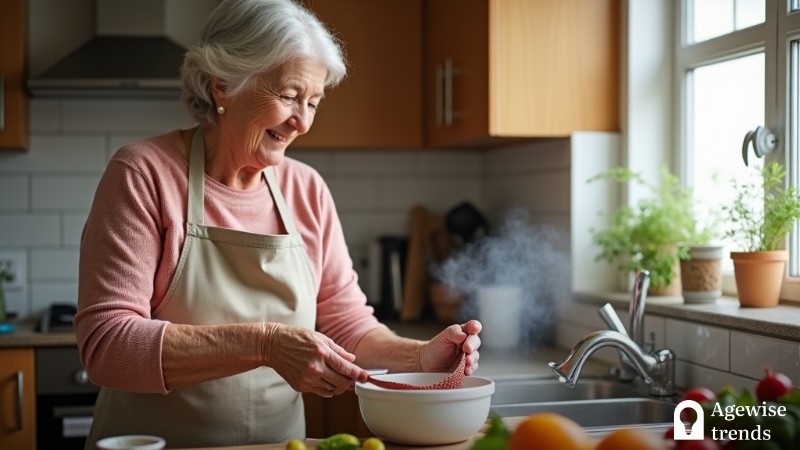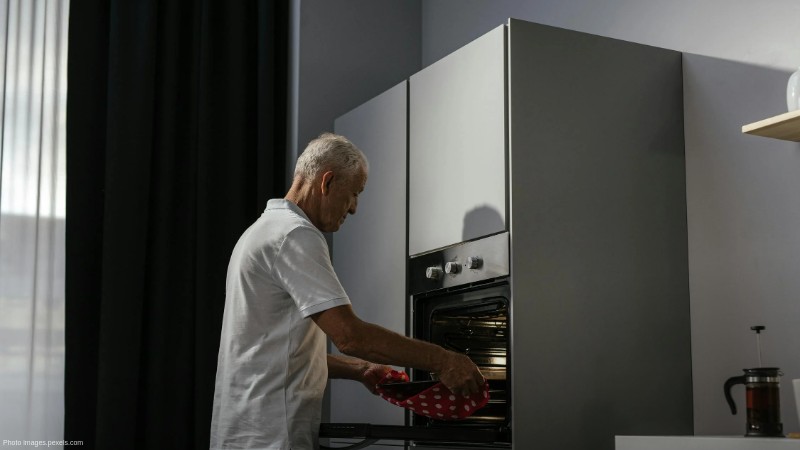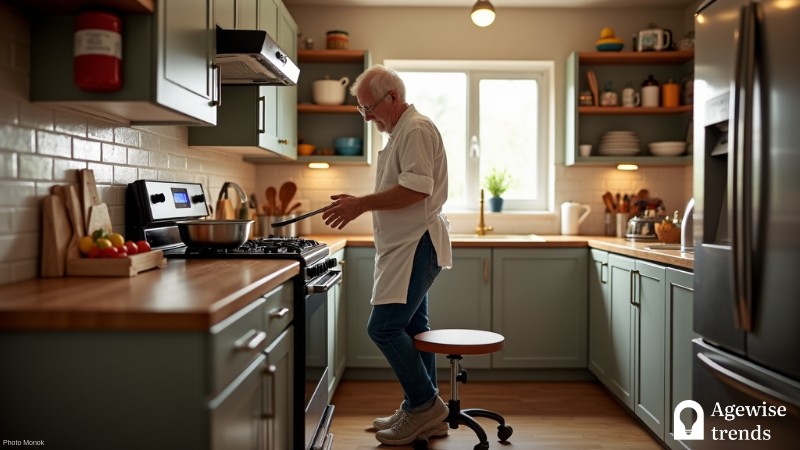Cooking can be an enjoyable and rewarding activity, but it can also present unique challenges for older adults. From handling sharp tools to maneuvering heavy cookware, the kitchen is full of potential hazards.
Fortunately, various adaptive kitchen tools and practical safety tips can help make cooking safer and easier for these individuals.
Key Takeaways
Adaptive kitchen tools can make cooking safer and easier for seniors by addressing physical and cognitive limitations, promoting independence, and minimizing the risk of accidents.
- Scoop plates with raised edges and non-slip bases help prevent spills and messes when transferring food.
- Easy-grip utensils with ergonomic handles reduce hand strain and fatigue, making cooking more accessible for older adults.
- Adaptive knives with lightweight designs and angled blades make cutting easier for those with limited dexterity.
Why adaptive kitchen tools matter
Cooking can often become a source of stress and frustration for seniors with physical or cognitive limitations.
Adaptive tools offer innovative solutions through ergonomic designs, lightweight materials, and user-friendly mechanisms to address these challenges.
These tools not only simplify the cooking process but also promote independence, minimize the risk of accidents, and contribute to an improved quality of life.
Must-have adaptive tools to make cooking safer
Whether it’s tools designed for better grip, gadgets that simplify food preparation, or strategies to minimize hazards, these solutions ensure that cooking remains accessible and enjoyable for the older generation.
1. Scoop plates: Designed with raised edges and non-slip bases, scoop plates enable seniors to easily transfer food without spills or messes.
2. Easy-grip utensils: Ergonomic handles with textured surfaces provide a secure grip, reducing hand strain and fatigue.
3. Adaptive knives: Lightweight and balanced knives with angled blades make cutting easier for those with limited dexterity.
4. One-handed can openers: Simple to use and requiring minimal effort, one-handed can openers are perfect for older adults with arthritis or limited hand strength.
5. Kitchen scales with large displays: Easy-to-read displays and simple interfaces make measuring ingredients a breeze, even for those with visual impairments.
6. Long-handled spoons and whisks: Extendable handles allow seniors to cook without bending or straining their backs.
7. Non-slip cutting boards: Specially designed cutting boards with textured surfaces prevent food from slipping off, reducing the risk of accidents.
8. Adjustable thermometers: Easy-to-use thermometers with large displays and automatic shut-off features ensure accurate temperature readings without unnecessary stress.
9. Easy-clean cookware: Lightweight, non-stick cookware with easy-grip handles makes cooking and cleaning a breeze for the older generation.
10. Kitchen organizers: Customizable organizers with clear labels and easy-to-reach storage compartments help keep the kitchen clutter-free and organized.
Tips to minimize kitchen risks for seniors
Kitchens rank among the most hazardous areas in a home. Although many are aware of the need for caution while cooking—given the risks associated with sharp knives, boiling water, and hot ovens—accidents can still occur despite these precautions.
The dangers are heightened for older adults, often due to reduced mobility or cognitive challenges. Taking a proactive approach to kitchen safety can help mitigate these risks, especially for elderly individuals.
Here are some ways to increase safety in the kitchen.
• Wear snug clothing when cooking to avoid accidents.
• Wait for freshly mopped floors to dry before walking on them.
• Always close drawers and cabinet doors when they’re not in use.
• Use non-slip floor mats and rugs to reduce the risk of falls.
• Make sure all electrical appliances are properly maintained and used correctly.
Conclusion
With the right tools and a few simple safety adjustments, cooking can transform from a challenge into an empowering and fulfilling experience for older adults.
Adaptive kitchen tools are designed to make cooking safer, more efficient, and more rewarding, addressing the unique needs of this demographic while boosting confidence and independence in the kitchen.
By investing in these practical solutions, caregivers and family members provide invaluable support, helping seniors maintain autonomy while minimizing potential risks.
These thoughtful adaptations ensure that meal preparation remains a meaningful and enjoyable part of daily life for older individuals and their loved ones.














